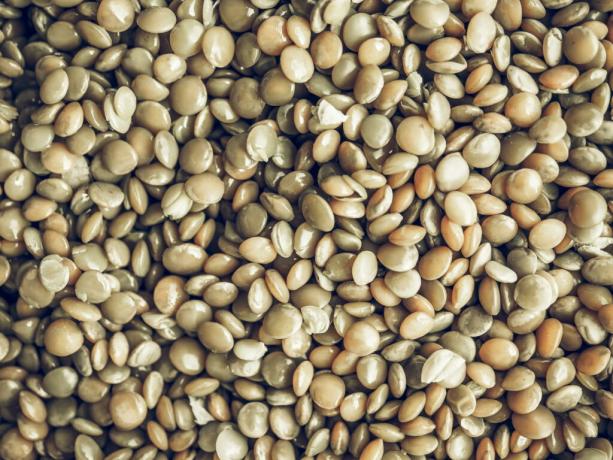The small protein suppliers can easily be planted in the garden. We reveal what you should consider when growing lentils.

lenses (Lens culinaris) are actually every gardener's dream. They taste good, are easy to grow and improve the soil. So there are enough reasons for cultivation. What more do you want?
Lentils' reputation as poor man's food preceded them for a long time. It is probably not justified, considering all the positive properties that the lenses bring with them. But it stems from the fact that lentils also grow where other crops struggle to thrive. Since until not so long ago large parts of the population still lived from agriculture, the lentil-growing regions were therefore the areas with poor soil and great poverty. Lentils were often a welcome rescue here.
contents
- When to plant lentils
- Where to plant lentils
- Planting lentils: the right approach
When to plant lentils
Plant your lentils in spring. Since the seeds can germinate from about 4 °C, sowing at the end of April or the beginning of May is optimal. In the warm Mediterranean region, the lens can even be used in autumn, as it survives temperatures down to -9 °C. In German-speaking countries, however, the cultivation period is limited to spring and summer.
Where to plant lentils
Lentils thrive particularly well on calcareous soil. It is not for nothing that lentils were mainly cultivated in Germany on the shell limestone of the Swabian Jura, in the Eifel and in Franconia. Chalky marl, sand or gravel is suitable as soil. Too nutrient-rich soil is even more detrimental. This is exactly the strength of the lentil: it grows where other crops can no longer be grown. In terms of climate, the lens likes it sunny, warm and dry.

Planting lentils: the right approach
Before cultivation you should first decide about the choice of lentil variety be aware, because there are definitely differences between the different lenses. Once you have found a suitable variety, it is time to cultivate it. Since lentils are not particularly stable, but like to lean on other plants, it can larger cultivation areas, it makes sense to add some cereals such as oats or barley between the lentils plant. This way the lens doesn't bend over so quickly. If you sow the lentil or the mixture of lentil and grain in the spring, you should put the lentil about four to five centimeters deep in the ground.
Once the plants have started to sprout, you can basically watch them twiddle your thumbs until late summer. The plants get along with little water and the fertilization is also very uncomplicated. Only the harvest then becomes exciting again, because lentils ripen from the bottom up. You can start harvesting as soon as the lentil kernels are hard and the pods on the lower part of the plant are turning brown. However, since the lentils are not all ripe at the same time, harvesting is quite tedious - you have to re-harvest again and again. To get them out of the pods, you can grate them wrapped in a cloth, for example. A sieve is probably best for cleaning the lenses.
If you don't want to do without lentils in the coming year either, then you should choose a different place in the garden for cultivation, because lentils are not self-compatible. You should wait four to six years before planting a lentil in the same place again.
Planting lentils summary:
- Calcareous soil
- Keep an interval of 4 to 6 years
- Sow in a mixture with cereals between April and early May
- Sowing depth: About 5 cm
- Harvest in late summer when the bottom pods are brown and the lentils are hard
Who has not yet chosen the right one lentil variety for his garden, he will definitely find what he is looking for in our variety article.

